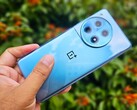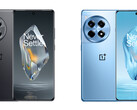OnePlus 12R 5G Smartphone Review: A compelling alternative to the Motorola Edge 50 Pro and Nothing Phone (2)
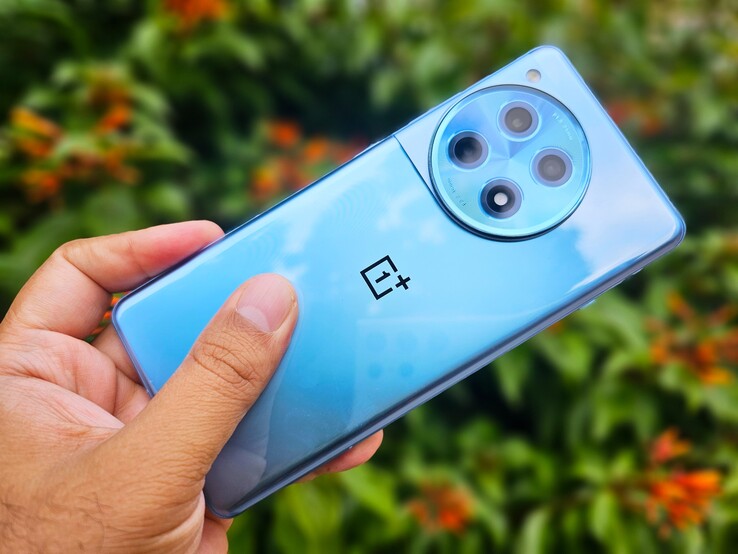
As OnePlus takes on 2024's Snapdragon 8 Gen 3-powered flagships with the OnePlus 12, the company has not forsaken its tradition of crafting affordable flagship-esque devices. This year's OnePlus 12R seeks to be a continuing endeavor to live up to the company's original "flagship killer" ethos.
The OnePlus 12R is powered by the Qualcomm Snapdragon 8 Gen 2 SoC and takes design cues from the OnePlus 12 and previous generation models. Our test unit comes with 16 GB LPDDR5X RAM and 256 GB of UFS 3.1 storage, which will set you back by ₹45,999 (€599 or US$599.99).
The 12R did suffer from communication faux pas at launch, though. OnePlus initially announced that the phone would feature UFS 4.0 storage, sparking excitement, only to confirm later that it actually uses UFS 3.1. Additionally, there was some initial confusion about the phone's waterproofing capabilities, which are now clarified to be IP64-rated.
Despite these launch hiccups, the OnePlus 12R occupies an important price niche in the smartphone ecosystem. Let’s delve into whether it successfully meets its objective in this review.
Potential competitors in comparison
Rating | Version | Date | Model | Weight | Height | Size | Resolution | Price |
|---|---|---|---|---|---|---|---|---|
| 85.4 % | v8 | 07 / 2024 | OnePlus 12R 5G SD 8 Gen 2, Adreno 740 | 207 g | 8.8 mm | 6.78" | 2780x1264 | |
| 81.9 % | v8 | 07 / 2024 | Google Pixel 8a Tensor G3, Mali-G715 MP7 | 188 g | 8.9 mm | 6.10" | 2400x1080 | |
| 89.1 % v7 (old) | v7 (old) | 05 / 2023 | OnePlus 11 5G SD 8 Gen 2, Adreno 740 | 205 g | 8.5 mm | 6.70" | 3216x1440 | |
| 84.9 % v7 (old) | v7 (old) | 01 / 2024 | Realme GT5 SD 8 Gen 2, Adreno 740 | 205 g | 8.9 mm | 6.74" | 2772x1240 | |
| 89 % v7 (old) | v7 (old) | 09 / 2023 | Sony Xperia 5 V SD 8 Gen 2, Adreno 740 | 182 g | 8.6 mm | 6.10" | 2520x1080 | |
| 87.6 % v7 (old) | v7 (old) | 05 / 2024 | Motorola Edge 50 Pro SD 7 Gen 3, Adreno 720 | 186 g | 8.2 mm | 6.70" | 2712x1220 | |
| 87.4 % v7 (old) | v7 (old) | 07 / 2023 | Nothing Phone (2) SD 8+ Gen 1, Adreno 730 | 201.2 g | 8.6 mm | 6.70" | 2412x1080 |
Note: We have recently updated our rating system and the results of version 8 are not comparable with the results of version 7. More information is available here.
Build: Fair-weather friend with Gorilla Glass Victus 2
The OnePlus 12R comes in two color options: Cool Blue (our unit) and Iron Gray. The Cool Blue variant sports a glass black, which makes it a smudge and fingerprint magnet.
The in-hand feel is not excessively slippery, but the glass back means that grips aren't the most secure. The Iron Gray variant comes with frosted glass back that offers better fingerprint resistance and a better grip relatively. Both options sport an aluminum frame that lends a premium feel.
On the back, there's a circular camera bump that is somewhat reminiscent of the OnePlus 11, although it's smaller than the one on the OnePlus 12 and doesn't quite match its imaging capabilities
The curved display is protected by Corning Gorilla Glass Victus 2 — an improvement over the 11R that lacked any form of protection.
At 207 g, the OnePlus 12R feels a tad lighter than the OnePlus 12 in daily usage. The smartphone is only IP64-rated, so anything more than a splash might warrant a trip to the service center.
Hardware: USB 2.0 with OTG and UFS 3.1 storage
Externally, the OnePlus 12R mirrors the button and Alert Slider placement found on the OnePlus 12, including the presence of an IR blaster. However, OnePlus has cut some corners to keep the costs low.
The 12R lacks AirVOOC wireless charging, and its USB port supports OTG but uses the slower USB 2.0 protocol. There is no microSD expansion; all storage variants on offer rely on the UFS 3.1 standard.
Software: Only three major OxygenOS updates for the 12R
The OnePlus 12R comes with OxygenOS 14 based on Android 14 out of the box. Security patches are current as of June 2024. The interface is clean without bloat or ads. The only pre-installed third-party app is Netflix, alongside some of OnePlus's own utilities.
The UI features are consistent with other devices running OxygenOS 14 with features such as File Dock, Smart Sidebar, Smart suggestions on the lockscreen and Always-on display for real-time apps such as supported food delivery services. Other welcome QoL touches include Flexible Window, Kids mode, and Zen Space.
However, the OnePlus 12R only offers three years of major Android updates and four years of security patches for OxygenOS, unlike the OnePlus 12 that promises four years of major Android updates.
This can be a contention for those particular about device longevity, especially since competing phones from Samsung offer at least four years of major Android updates while Google guarantees seven years of support with the Pixel 8a.
While a longer OS support period is always welcome, a four-year support period isn't too shabby either, at least in comparison with some of its competitors such as the Realme GT5 that don't inspire much confidence in this regard.
Connectivity: Speedy Wi-Fi 6 and accurate navigation
The OnePlus 12R supports Wi-Fi 7 but lacks support for Wi-Fi 6E much like its flagship cousin. Indian variants come with only Wi-Fi 6 enabled, however.
We observed excellent and fairly stable transmit speeds up to 1.67 Gbps when tested with our reference Asus ROG Rapture GT-AXE11000 router at a 1 m distance in clear line of sight.
The receive throughput was generally good, but the phone could not sustain it till the end of the test.
| Networking / iperf3 transmit AXE11000 | |
| OnePlus 11 5G | |
| OnePlus 12R 5G | |
| Average Wi-Fi 7 (556 - 1828, n=62) | |
| Realme GT5 | |
| Sony Xperia 5 V | |
| Google Pixel 8a | |
| Average of class Smartphone (49.8 - 1828, n=177, last 2 years) | |
| Networking / iperf3 receive AXE11000 | |
| OnePlus 11 5G | |
| OnePlus 12R 5G | |
| Average Wi-Fi 7 (565 - 1875, n=62) | |
| Realme GT5 | |
| Sony Xperia 5 V | |
| Google Pixel 8a | |
| Average of class Smartphone (52 - 1721, n=177, last 2 years) | |
The OnePlus 12R supports both L1 and L5 GPS (GNSS) bands in addition to a variety of other global navigation satellite systems (GNSS) including Galileo (E1+E5a), QZSS (L1+L5), A-GPS, Beidou (B1+B1C+B2a), GLONASS (L1), and NavIC (IRNSS L5). SBAS like EGNOS and GAGAN are supported as well.
The phone has no trouble in latching onto a satellite outdoors but somewhat struggles with indoor reception.
The 12R's on-road navigation performance is comparable to that of the Apple iPhone 15 Pro. It can effectively negotiate turns and follow straight paths without cutting too much through buildings, offering superior accuracy than even the OnePlus 12.
Telephony and Call quality: eSIM only for the US
The OnePlus 12R can take two physical nano-SIM cards in dual-SIM dual-standby (DSDS) mode, which means only one SIM can be used actively at a time. eSIMs are not supported in Indian and European variants, but those in the US can make use of this feature.
The 12R is a global phone with wide cellular band support. The US variant supports a few additional LTE and 5G bands not enabled in the Indian version, but this should not impact the phone's global roaming abilities.
Call quality is good on the Jio True5G network with clear audio through both the earpiece and the loudspeaker. However, the audio levels seemed a tad low on both speakers even at max volume.
Voice over 5G (Vo5G or VoNR) is not offered by default in the current firmware and needs to be forced in Developer Options. The phone switches to VoLTE if the carrier does not offer VoNR over a 5G SA network.
Google Phone is the default dialer. Native call recording is supported with an announcement to all participants.
Cameras: 50 MP Sony IMX890 is the lone performer
The OnePlus 12R's 16 MP selfie camera is pretty much similar to that of the OnePlus 11's, but with a wider f/2.4 aperture and a slightly narrower 26 mm field of view.
Selfies come out well in good lighting, but the colors appear muted and drab. Details in selfie photos are reproduced well with adequate sharpness.
Portrait selfies are decent and suitable for social media sharing, showcasing well-preserved details such as facial hair, although some finer details at the edges may still get clipped. Videos from the selfie camera are capped at 1080p 30 fps.
The 12R's primary camera is the exact 50 MP Sony IMX890 shooter we've seen before with the OnePlus 11. The 8 MP Sony IMX355 ultra-wide offers a somewhat constricted 112° field-of-view compared to the 11R's 120°.
Finally, we have a paltry 2 MP macro sensor that isn't of much practical use. Worse, the Macro mode has to be selected manually as the main camera does not auto switch to macro.
It is high time OEMs stop including low quality 2 MP macro sensors just to tick off a box in the spec sheet or make the camera hump look sophisticated. A more pragmatic approach would be to offer an auto macro mode with the main camera itself.
The stock camera app is standard OnePlus fare, and the interface poses no surprises. The OnePlus 12R does not inherit any of the Hasselblad co-branding from its bigger cousin, so there are no Hasselblad Master or XPan modes on offer.
That being said, the Pro mode does offer useful features like histogram, focus peaking, and the ability to shoot in both RAW and JPEG. Unlike the OnePlus 12, the camera app does not show the focal length equivalents for a particular zoom mode.
The 50 MP Sony IMX890 captures impressive shots with excellent details and dynamic range, free from perceivable noise or fringing. The camera bins the images to 12.5 MP by default. For a direct 50 MP capture, you will have to manually select High-Res mode in the camera app.
The 2x in-sensor zoom yields good results as well. The photos aren't OnePlus 12 level — we can see some fringing and smoothing artefacts — but they can get the job done for most socials.
The 12R's camera beings feeling the pinch when pushed further to 5x in-sensor zoom. While they are still serviceable, a closer examination reveals excessive softening and loss of detail and color. The OnePlus 12 performs much better in this regard.
Photos from the 8 MP Sony IMX355 ultra-wide look decent as long as you aren't pixel peeping. Details nearer to the lens are reproduced adequately, but the camera struggles in properly resolving details farther in the frame.
Image comparison
Choose a scene and navigate within the first image. One click changes the position on touchscreens. One click on the zoomed-in image opens the original in a new window. The first image shows the scaled photograph of the test device.
Main Camera2x Zoom5x ZoomUltra-wide 0.6xLow lightIn optimal lighting, the OnePlus 12R shows fairly good color reproduction in certain shades, particularly with skin and neutral tones, when tested with the ColorChecker Passport. Details in the test chart are reproduced well.
At 1 lux, the camera takes a 2.5 sec-long exposure. Significantly large color deviations are observed in this condition, but the test chart remains legible.
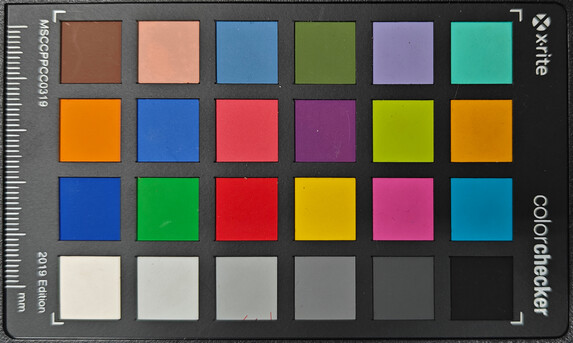
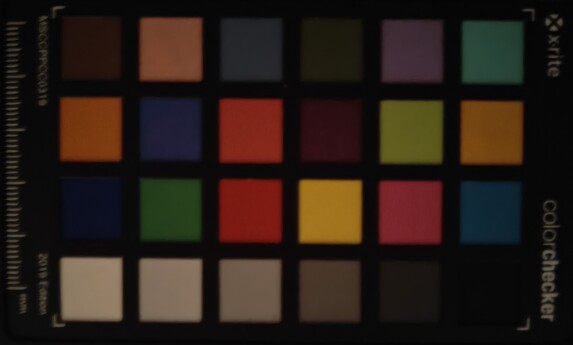
Accessories and Warranty: Typical OnePlus show
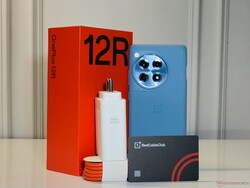
In India, the OnePlus 12R comes with a color-matching protective case, pre-applied screen protector, SIM ejector tool, Red Cable Club card, brand sticker, phone hole seal stickers, a 100 W SuperVOOC power adapter, and a USB Type-A to Type-C cable. International units may forfeit the protective case.
The 12R comes with a standard one-year warranty in India. Buyers have the option of extending the warranty by another 12 months for ₹99 or opt for OnePlus Care that offers one-year warranty extension and two years of accidental damage protection for ₹4,999.
Input devices and operation: Responsive UI and feedback with O-Haptics
The 12R features an accurate and responsive in-display optical fingerprint reader. A less secure 2D face unlock can be setup if needed.
ColorOS's O-Haptics provides natural feedback that can be fine-tuned. The 12R also features the 12's Aqua Touch that allows using the screen with wet hands, but your mileage may vary.
OnePlus advertises a 1,000 Hz touch sampling rate, which should lend itself to a responsive gaming experience.
Display: LTPO4 AMOLED panel with up to 360 Hz DC Dimming and Dolby Vision
The OnePlus 12R's display is essentially the same as that of the 12's but with a lower 2780 x 1264 resolution. The phone uses an LTPO4 AMOLED panel that can cycle its refresh rate from 1 Hz to 120 Hz depending on the content.
OxygenOS also allows setting app-specific refresh rates, but not all apps can take advantage of this. For instance, Google Maps and the default Photos app run are capped at 60 Hz while YouTube can go up to 90 Hz.
The 12R fully supports Dolby Vision and HDR10+ and can display photos in ProXDR (Ultra HDR) mode with increased dynamic range.
Similar to the OnePlus 12, the 12R is also specified to attain 1,600 nits peak brightness in high brightness mode (HBM) and 4,500 nits while playing HDR content. However, these numbers are not practically achievable.
We measured a maximum of 1,028 nits in HBM and only about 985 nits in HDR mode at APL 10 and lower. The results were the same even while testing with the Peak brightness test function in Developer Options that uses a 1% APL window.
The brightness levels are still adequate for a decent HDR viewing experience, but don't expect OnePlus 12 levels of performance in this regard.
| |||||||||||||||||||||||||
Brightness Distribution: 97 %
Center on Battery: 1020 cd/m²
Contrast: 134211:1 (Black: 0.0076 cd/m²)
ΔE ColorChecker Calman: 0.94 | ∀{0.5-29.43 Ø4.78}
ΔE Greyscale Calman: 1.3 | ∀{0.09-98 Ø5}
98% sRGB (Calman 2D)
Gamma: 2.21
CCT: 6379 K
| OnePlus 12R 5G AMOLED, 2780x1264, 6.8" | Google Pixel 8a AMOLED, 2400x1080, 6.1" | OnePlus 11 5G AMOLED, 3216x1440, 6.7" | Realme GT5 AMOLED, 2772x1240, 6.7" | Sony Xperia 5 V OLED, 2520x1080, 6.1" | Motorola Edge 50 Pro P-OLED, 2712x1220, 6.7" | Nothing Phone (2) OLED, 2412x1080, 6.7" | |
|---|---|---|---|---|---|---|---|
| Response Times | -26% | -36% | 37% | 6% | 29% | 44% | |
| Response Time Grey 50% / Grey 80% * (ms) | 1.2 ? | 2.83 ? -136% | 2.2 ? -83% | 1.37 ? -14% | 2.09 ? -74% | 1.6 ? -33% | 1.2 ? -0% |
| Response Time Black / White * (ms) | 12 ? | 1.05 ? 91% | 10.6 ? 12% | 1.6 ? 87% | 1.74 ? 85% | 1.2 ? 90% | 1.4 ? 88% |
| PWM Frequency (Hz) | 120.6 ? | 120 | 361.61 ? | 120 | 274 | 714 | 90 |
| PWM Amplitude * (%) | 20 | 26.3 -32% | |||||
| Screen | -16% | -45% | -165% | -37% | -22% | -12% | |
| Brightness middle (cd/m²) | 1020 | 1518 49% | 470 -54% | 1080 6% | 889 -13% | 1064 4% | 951 -7% |
| Brightness (cd/m²) | 1006 | 1466 46% | 470 -53% | 1084 8% | 898 -11% | 1038 3% | 948 -6% |
| Brightness Distribution (%) | 97 | 88 -9% | 97 0% | 92 -5% | 97 0% | 88 -9% | 98 1% |
| Black Level * (cd/m²) | 0.0076 | ||||||
| Contrast (:1) | 134211 | ||||||
| Colorchecker dE 2000 * | 0.94 | 1.2 -28% | 1.23 -31% | 5 -432% | 1.4 -49% | 1.17 -24% | 1 -6% |
| Colorchecker dE 2000 max. * | 1.66 | 3.3 -99% | 3.11 -87% | 7.7 -364% | 4.5 -171% | 2.47 -49% | 2.2 -33% |
| Greyscale dE 2000 * | 1.3 | 2 -54% | 1.9 -46% | 3.9 -200% | 1 23% | 2 -54% | 1.6 -23% |
| Gamma | 2.21 100% | 2.2 100% | 2.23 99% | 2.03 108% | 2.23 99% | 2.238 98% | 2.203 100% |
| CCT | 6379 102% | 6786 96% | 6479 100% | 7001 93% | 6456 101% | 6423 101% | 6516 100% |
| Total Average (Program / Settings) | -21% /
-19% | -41% /
-43% | -64% /
-114% | -16% /
-26% | 4% /
-9% | 16% /
2% |
* ... smaller is better
Natural mode, default color temperature (Color space target: sRGB)
OnePlus offers several color modes to choose from, with Natural being the most realistic and Brilliant having the widest gamut.
The Natural mode offers highly accurate colors out-of-the-box as evidenced by very low Delta E 2000 values in both Grayscale and ColorChecker.
Brilliant mode, default color temperature (Color space target: DCI-P3)
Brilliant mode, warm color temperature (Color space target: DCI-P3)
Display Response Times
| ↔ Response Time Black to White | ||
|---|---|---|
| 12 ms ... rise ↗ and fall ↘ combined | ↗ 10 ms rise | |
| ↘ 2 ms fall | ||
| The screen shows good response rates in our tests, but may be too slow for competitive gamers. In comparison, all tested devices range from 0.1 (minimum) to 240 (maximum) ms. » 30 % of all devices are better. This means that the measured response time is better than the average of all tested devices (20.2 ms). | ||
| ↔ Response Time 50% Grey to 80% Grey | ||
| 1.2 ms ... rise ↗ and fall ↘ combined | ↗ 0.71 ms rise | |
| ↘ 0.49 ms fall | ||
| The screen shows very fast response rates in our tests and should be very well suited for fast-paced gaming. In comparison, all tested devices range from 0.165 (minimum) to 636 (maximum) ms. » 4 % of all devices are better. This means that the measured response time is better than the average of all tested devices (31.6 ms). | ||
Response times are similar to what we've seen before with the OnePlus 12 with fast 50% grey to 80% grey transitions.
Screen Flickering / PWM (Pulse-Width Modulation)
| Screen flickering / PWM detected | 120.6 Hz Amplitude: 20 % | ≤ 100 % brightness setting | |
The display backlight flickers at 120.6 Hz (worst case, e.g., utilizing PWM) Flickering detected at a brightness setting of 100 % and below. There should be no flickering or PWM above this brightness setting. The frequency of 120.6 Hz is very low, so the flickering may cause eyestrain and headaches after extended use. In comparison: 53 % of all tested devices do not use PWM to dim the display. If PWM was detected, an average of 8098 (minimum: 5 - maximum: 343500) Hz was measured. | |||
The OnePlus 12R uses 120 Hz DC dimming at all brightness levels above 33%. Toggling Ultra Anti-Flicker in the settings increases the DC dimming frequency to 360 Hz. OnePlus claims a 2,160 Hz PWM at low brightness levels, but we are unable to confirm this value with our testing.
More information can be found in our article, "Why PWM is such a headache". You can also refer to our PWM Ranking table for a comparison of PWM across reviewed devices.
The 12R's display showed no signs of temporal dithering.
Performance: Snapdragon 8 Gen 2 throws no surprises
The OnePlus 12R is powered by the Qualcomm Snapdragon 8 Gen 2, similar to the OnePlus 11. The Snapdragon 8 Gen 2 is still a highly capable SoC that can offer flagship-levels of performance.
OnePlus throttles the 8 Gen 2's performance by default. We used the High Performance mode to enable the SoC to fully flex its muscles, especially in single-core.
We observed a 20% decrease in Geekbench 5.5 single-core in the default mode while multi-core scores remained relatively unchanged. A similar result in seen while running Geekbench 6.2 with High Performance mode disabled. This time, single-core scores tank by 22% but multi-core takes a 14% hit as well.
Cumulative CPU performance is identical to that of the OnePlus 11, as expected. Although the OnePlus 12R leads the 11 in PCMark tests, the latter makes up for lost ground in CrossMark.
| CPU Performance rating - Percent | |
| OnePlus 11 5G | |
| OnePlus 12R 5G | |
| Sony Xperia 5 V -1! | |
| Average Qualcomm Snapdragon 8 Gen 2 | |
| Average of class Smartphone | |
| Realme GT5 -1! | |
| Nothing Phone (2) -1! | |
| Google Pixel 8a -1! | |
| Motorola Edge 50 Pro -2! | |
| UL Procyon AI Inference for Android - Overall Score NNAPI | |
| Google Pixel 8a | |
| Average of class Smartphone (3769 - 81594, n=135, last 2 years) | |
| Sony Xperia 5 V | |
| OnePlus 12R 5G | |
| OnePlus 11 5G | |
| Average Qualcomm Snapdragon 8 Gen 2 (11338 - 16880, n=21) | |
| Nothing Phone (2) | |
| Realme GT5 | |
| Motorola Edge 50 Pro | |
On the GPU side, the 8 Gen 2's Adreno 740 GPU performs on expected lines, but trails behind the one in the Sony Xperia 5 V by 12% in cumulative 3DMark and GFXBench performance.
3DMark: Wild Life Extreme Unlimited | Wild Life Extreme | Wild Life Unlimited Score | 2560x1440 Sling Shot Extreme (ES 3.1) Unlimited Physics | 2560x1440 Sling Shot Extreme (ES 3.1) Unlimited Graphics | 2560x1440 Sling Shot Extreme (ES 3.1) Unlimited
GFXBench (DX / GLBenchmark) 2.7: T-Rex Onscreen | 1920x1080 T-Rex Offscreen
GFXBench 3.0: on screen Manhattan Onscreen OGL | 1920x1080 1080p Manhattan Offscreen
GFXBench 3.1: on screen Manhattan ES 3.1 Onscreen | 1920x1080 Manhattan ES 3.1 Offscreen
GFXBench: on screen Car Chase Onscreen | 1920x1080 Car Chase Offscreen | on screen Aztec Ruins High Tier Onscreen | 2560x1440 Aztec Ruins High Tier Offscreen | on screen Aztec Ruins Normal Tier Onscreen | 1920x1080 Aztec Ruins Normal Tier Offscreen | 3840x2160 4K Aztec Ruins High Tier Offscreen
| GPU Performance rating | |
| Sony Xperia 5 V | |
| OnePlus 11 5G | |
| OnePlus 12R 5G | |
| Realme GT5 -3! | |
| Google Pixel 8a | |
| Nothing Phone (2) -4! | |
| Motorola Edge 50 Pro -4! | |
| 3DMark / Wild Life Extreme Unlimited | |
| OnePlus 12R 5G | |
| OnePlus 11 5G | |
| Sony Xperia 5 V | |
| Realme GT5 | |
| Nothing Phone (2) | |
| Google Pixel 8a | |
| Motorola Edge 50 Pro | |
| 3DMark / Wild Life Extreme | |
| OnePlus 12R 5G | |
| OnePlus 11 5G | |
| Realme GT5 | |
| Sony Xperia 5 V | |
| Nothing Phone (2) | |
| Google Pixel 8a | |
| Motorola Edge 50 Pro | |
| 3DMark / Wild Life Unlimited Score | |
| OnePlus 12R 5G | |
| OnePlus 11 5G | |
| Sony Xperia 5 V | |
| Realme GT5 | |
| Google Pixel 8a | |
| Motorola Edge 50 Pro | |
| 3DMark / Sling Shot Extreme (ES 3.1) Unlimited Physics | |
| OnePlus 11 5G | |
| Sony Xperia 5 V | |
| OnePlus 12R 5G | |
| Google Pixel 8a | |
| 3DMark / Sling Shot Extreme (ES 3.1) Unlimited Graphics | |
| OnePlus 11 5G | |
| OnePlus 12R 5G | |
| Sony Xperia 5 V | |
| Google Pixel 8a | |
| 3DMark / Sling Shot Extreme (ES 3.1) Unlimited | |
| OnePlus 11 5G | |
| OnePlus 12R 5G | |
| Sony Xperia 5 V | |
| Google Pixel 8a | |
| GFXBench (DX / GLBenchmark) 2.7 / T-Rex Onscreen | |
| Sony Xperia 5 V | |
| Google Pixel 8a | |
| Motorola Edge 50 Pro | |
| OnePlus 11 5G | |
| Nothing Phone (2) | |
| Realme GT5 | |
| OnePlus 12R 5G | |
| GFXBench (DX / GLBenchmark) 2.7 / T-Rex Offscreen | |
| OnePlus 12R 5G | |
| OnePlus 11 5G | |
| Sony Xperia 5 V | |
| Realme GT5 | |
| Google Pixel 8a | |
| Nothing Phone (2) | |
| Motorola Edge 50 Pro | |
| GFXBench 3.0 / Manhattan Onscreen OGL | |
| Sony Xperia 5 V | |
| Google Pixel 8a | |
| Motorola Edge 50 Pro | |
| OnePlus 11 5G | |
| Nothing Phone (2) | |
| Realme GT5 | |
| OnePlus 12R 5G | |
| GFXBench 3.0 / 1080p Manhattan Offscreen | |
| Realme GT5 | |
| Sony Xperia 5 V | |
| OnePlus 12R 5G | |
| OnePlus 11 5G | |
| Google Pixel 8a | |
| Nothing Phone (2) | |
| Motorola Edge 50 Pro | |
| GFXBench 3.1 / Manhattan ES 3.1 Onscreen | |
| Sony Xperia 5 V | |
| Google Pixel 8a | |
| OnePlus 11 5G | |
| Nothing Phone (2) | |
| Realme GT5 | |
| OnePlus 12R 5G | |
| Motorola Edge 50 Pro | |
| GFXBench 3.1 / Manhattan ES 3.1 Offscreen | |
| OnePlus 12R 5G | |
| OnePlus 11 5G | |
| Realme GT5 | |
| Sony Xperia 5 V | |
| Nothing Phone (2) | |
| Google Pixel 8a | |
| Motorola Edge 50 Pro | |
| GFXBench / Car Chase Onscreen | |
| Sony Xperia 5 V | |
| Google Pixel 8a | |
| Realme GT5 | |
| OnePlus 12R 5G | |
| Nothing Phone (2) | |
| OnePlus 11 5G | |
| Motorola Edge 50 Pro | |
| GFXBench / Car Chase Offscreen | |
| Realme GT5 | |
| OnePlus 11 5G | |
| OnePlus 12R 5G | |
| Sony Xperia 5 V | |
| Nothing Phone (2) | |
| Google Pixel 8a | |
| GFXBench / Aztec Ruins High Tier Onscreen | |
| Sony Xperia 5 V | |
| Realme GT5 | |
| OnePlus 12R 5G | |
| Nothing Phone (2) | |
| Google Pixel 8a | |
| OnePlus 11 5G | |
| Motorola Edge 50 Pro | |
| GFXBench / Aztec Ruins High Tier Offscreen | |
| Realme GT5 | |
| OnePlus 11 5G | |
| OnePlus 12R 5G | |
| Sony Xperia 5 V | |
| Nothing Phone (2) | |
| Google Pixel 8a | |
| Motorola Edge 50 Pro | |
| GFXBench / Aztec Ruins Normal Tier Onscreen | |
| Sony Xperia 5 V | |
| Google Pixel 8a | |
| OnePlus 11 5G | |
| Nothing Phone (2) | |
| Realme GT5 | |
| OnePlus 12R 5G | |
| Motorola Edge 50 Pro | |
| GFXBench / Aztec Ruins Normal Tier Offscreen | |
| Realme GT5 | |
| OnePlus 11 5G | |
| OnePlus 12R 5G | |
| Sony Xperia 5 V | |
| Nothing Phone (2) | |
| Google Pixel 8a | |
| Motorola Edge 50 Pro | |
| GFXBench / 4K Aztec Ruins High Tier Offscreen | |
| OnePlus 11 5G | |
| Realme GT5 | |
| OnePlus 12R 5G | |
| Sony Xperia 5 V | |
| Nothing Phone (2) | |
| Google Pixel 8a | |
| Motorola Edge 50 Pro | |
Basemark GPUScore
The OnePlus 12R performs exceedingly well in browser benchmarks, leading the OnePlus 11 and the Google Pixel 8a by 35% and 50%, respectively overall.
| Jetstream 2 - 2.0 Total Score | |
| Sony Xperia 5 V (Chrome 117.0.5938.60) | |
| Nothing Phone (2) (Chrome 114) | |
| OnePlus 12R 5G (Chrome 126) | |
| Average of class Smartphone (23.8 - 387, n=149, last 2 years) | |
| OnePlus 11 5G (Chrome 112) | |
| Average Qualcomm Snapdragon 8 Gen 2 (62.7 - 179.2, n=23) | |
| Motorola Edge 50 Pro (Chrome 124) | |
| Google Pixel 8a (Chrome 126) | |
| Realme GT5 | |
| Speedometer 2.0 - Result 2.0 | |
| Average of class Smartphone (15.2 - 643, n=122, last 2 years) | |
| OnePlus 12R 5G (Chrome 126) | |
| Sony Xperia 5 V (Chrome 117.0.5938.60) | |
| Nothing Phone (2) (Chrome 114) | |
| Google Pixel 8a (Chrome 126) | |
| Motorola Edge 50 Pro (Chrome 124) | |
| Average Qualcomm Snapdragon 8 Gen 2 (62.9 - 225, n=18) | |
| OnePlus 11 5G (Chrome 112) | |
| WebXPRT 4 - Overall | |
| OnePlus 12R 5G (Chrome 126) | |
| Sony Xperia 5 V (Chrome 117.0.5938.60) | |
| Nothing Phone (2) (Chrome 114) | |
| Average of class Smartphone (27 - 306, n=145, last 2 years) | |
| Average Qualcomm Snapdragon 8 Gen 2 (28 - 183, n=22) | |
| OnePlus 11 5G (Chrome 112) | |
| Motorola Edge 50 Pro (Chrome 124) | |
| Google Pixel 8a (Chrome 126) | |
| Realme GT5 (Realme Browser 40) | |
| Octane V2 - Total Score | |
| OnePlus 12R 5G (Chrome 126) | |
| Sony Xperia 5 V (Chrome 117.0.5938.60) | |
| OnePlus 11 5G (Chrome 112) | |
| Nothing Phone (2) (Chrome 114) | |
| Average of class Smartphone (2228 - 121337, n=197, last 2 years) | |
| Google Pixel 8a (Chrome 126) | |
| Average Qualcomm Snapdragon 8 Gen 2 (19870 - 65418, n=25) | |
| Motorola Edge 50 Pro (Chrome 124) | |
| Realme GT5 (Realme Browser 40) | |
| Mozilla Kraken 1.1 - Total | |
| Realme GT5 (Realme Browser 40) | |
| Average of class Smartphone (257 - 28190, n=155, last 2 years) | |
| Motorola Edge 50 Pro (Chrome 124) | |
| Average Qualcomm Snapdragon 8 Gen 2 (602 - 1837, n=22) | |
| OnePlus 11 5G (Chrome 112) | |
| Google Pixel 8a (Chrome 126) | |
| Nothing Phone (2) (Chrome 114) | |
| OnePlus 12R 5G (Chrome 126) | |
| Sony Xperia 5 V (Chrome 117.0.5938.60) | |
* ... smaller is better
The 12R's UFS 3.1 storage cannot match the likes of the Realme GT5 or the OnePlus 11, both of which use UFS 4.0 flash.
That being said, the Pixel 8a, which also uses UFS 3.1 flash, trails the 12R by a significant 50% in storage tests.
| OnePlus 12R 5G | Google Pixel 8a | OnePlus 11 5G | Realme GT5 | Sony Xperia 5 V | Motorola Edge 50 Pro | Nothing Phone (2) | Average 256 GB UFS 3.1 Flash | Average of class Smartphone | |
|---|---|---|---|---|---|---|---|---|---|
| AndroBench 3-5 | -50% | 40% | 61% | -4% | -25% | -8% | -20% | -2% | |
| Sequential Read 256KB (MB/s) | 1806.24 | 1509.65 -16% | 3249.41 80% | 3475.6 92% | 1812.23 0% | 1023.6 -43% | 1949.5 8% | 1757 ? -3% | 2228 ? 23% |
| Sequential Write 256KB (MB/s) | 1606.11 | 255.31 -84% | 2758.14 72% | 3117.44 94% | 1331.81 -17% | 1025.9 -36% | 1517.6 -6% | 1204 ? -25% | 1852 ? 15% |
| Random Read 4KB (MB/s) | 347.65 | 165.98 -52% | 379.42 9% | 479.83 38% | 359.71 3% | 337 -3% | 287.5 -17% | 287 ? -17% | 296 ? -15% |
| Random Write 4KB (MB/s) | 476.88 | 243.82 -49% | 470.17 -1% | 577.13 21% | 473.91 -1% | 390.2 -18% | 403.8 -15% | 318 ? -33% | 339 ? -29% |
Gaming: 90 fps at low settings
The OnePlus 12R delivers decent frame rates in PUBG Mobile and Genshin Impact at all tested settings without much throttling. PUBG Mobile tops out at 40 fps in Ultra HDR mode while hitting 90 fps in the Smooth graphics preset.
Genshin Impact did not offer a 120 fps option in any of the tested presets, but the game can be played a smooth 60 fps even on the Highest preset.
All performance metrics were logged using the GameBench app.
Emissions: Cryo-velocity vapor chamber pushed to the hilt under load
The OnePlus 12R features the same 9,140 mm² dual Cryo-velocity vapor chamber used in the OnePlus 12. Despite the large cooling area, we see up to 28% throttling in 3DMark Wild Life Stress tests.
That being said, the phone has no qualms in sailing through the Steel Nomad Light Stress, outperforming the Pixel 8a by a massive 81%.
Temperature
We observe elevated surface temperatures when both the CPU and GPU are under maximum load. However, users are unlikely to encounter such loads in daily use.
Gaming, even at high settings, is relatively throttle-free as seen in the graphs above.
(-) The maximum temperature on the upper side is 45.6 °C / 114 F, compared to the average of 35.2 °C / 95 F, ranging from 21.9 to 247 °C for the class Smartphone.
(±) The bottom heats up to a maximum of 42.6 °C / 109 F, compared to the average of 34 °C / 93 F
(+) In idle usage, the average temperature for the upper side is 25.8 °C / 78 F, compared to the device average of 32.9 °C / 91 F.
3DMark Stress Test
| 3DMark / Wild Life Stress Test Stability | |
| Motorola Edge 50 Pro | |
| OnePlus 12R 5G | |
| Nothing Phone (2) | |
| Sony Xperia 5 V | |
| Google Pixel 8a | |
| OnePlus 11 5G | |
| 3DMark / Wild Life Extreme Stress Test | |
| Motorola Edge 50 Pro | |
| Nothing Phone (2) | |
| OnePlus 12R 5G | |
| OnePlus 11 5G | |
| Sony Xperia 5 V | |
| Google Pixel 8a | |
| 3DMark / Steel Nomad Light Stress Test Stability | |
| OnePlus 12R 5G | |
| Google Pixel 8a | |
Speakers
The 12R features a stereo speaker setup, with the earpiece also doubling up as a loudspeaker. The measured 83.1 dB(A) loudness is on similar lines as that of the OnePlus 12.
This level of loudness should be adequate as long as there isn't too much ambient noise. The bass response is understandably lacking, but the mids and highs are reproduced well.
Bluetooth 5.3 and USB Type-C allow for connecting external audio equipment. Supported Bluetooth audio codecs include SBC, AAC, aptX, aptX HD, aptX Adaptive, aptX TWS+, LHDC, and LDAC.
OnePlus 12R 5G audio analysis
(+) | speakers can play relatively loud (83.1 dB)
Bass 100 - 315 Hz
(-) | nearly no bass - on average 18.5% lower than median
(±) | linearity of bass is average (10.5% delta to prev. frequency)
Mids 400 - 2000 Hz
(+) | balanced mids - only 3.3% away from median
(+) | mids are linear (2.7% delta to prev. frequency)
Highs 2 - 16 kHz
(±) | higher highs - on average 6% higher than median
(+) | highs are linear (5.9% delta to prev. frequency)
Overall 100 - 16.000 Hz
(±) | linearity of overall sound is average (15.2% difference to median)
Compared to same class
» 3% of all tested devices in this class were better, 3% similar, 95% worse
» The best had a delta of 11%, average was 35%, worst was 134%
Compared to all devices tested
» 21% of all tested devices were better, 4% similar, 75% worse
» The best had a delta of 4%, average was 24%, worst was 134%
Apple iPhone 15 Pro Max audio analysis
(+) | speakers can play relatively loud (92.3 dB)
Bass 100 - 315 Hz
(-) | nearly no bass - on average 21.2% lower than median
(+) | bass is linear (5.3% delta to prev. frequency)
Mids 400 - 2000 Hz
(+) | balanced mids - only 4.4% away from median
(+) | mids are linear (3.5% delta to prev. frequency)
Highs 2 - 16 kHz
(±) | higher highs - on average 5.3% higher than median
(+) | highs are linear (2.4% delta to prev. frequency)
Overall 100 - 16.000 Hz
(±) | linearity of overall sound is average (15.8% difference to median)
Compared to same class
» 4% of all tested devices in this class were better, 4% similar, 92% worse
» The best had a delta of 11%, average was 35%, worst was 134%
Compared to all devices tested
» 24% of all tested devices were better, 5% similar, 71% worse
» The best had a delta of 4%, average was 24%, worst was 134%
Energy management: Excellent battery life despite higher idle power draws
Power consumption
The OnePlus 12R shows somewhat higher power consumption in idle compared to other Snapdragon 8 Gen 2 phones such as the Xperia 5 V and the Realme GT5.
That being said, power draws under max. load are along similar lines as the Realme GT5 and OnePlus 11.
| Off / Standby | |
| Idle | |
| Load |
|
Key:
min: | |
| OnePlus 12R 5G SD 8 Gen 2, Adreno 740, 256 GB UFS 3.1 Flash, AMOLED, 2780x1264, 6.8" | Google Pixel 8a Tensor G3, Mali-G715 MP7, 128 GB UFS 3.1 Flash, AMOLED, 2400x1080, 6.1" | OnePlus 11 5G SD 8 Gen 2, Adreno 740, 256 GB UFS 4.0 Flash, AMOLED, 3216x1440, 6.7" | Realme GT5 SD 8 Gen 2, Adreno 740, 512 GB UFS 4.0 Flash, AMOLED, 2772x1240, 6.7" | Sony Xperia 5 V SD 8 Gen 2, Adreno 740, 128 GB UFS 3.1 Flash, OLED, 2520x1080, 6.1" | Motorola Edge 50 Pro SD 7 Gen 3, Adreno 720, 512 GB UFS 2.2 Flash, P-OLED, 2712x1220, 6.7" | Nothing Phone (2) SD 8+ Gen 1, Adreno 730, 256 GB UFS 3.1 Flash, OLED, 2412x1080, 6.7" | Average Qualcomm Adreno 740 | Average of class Smartphone | |
|---|---|---|---|---|---|---|---|---|---|
| Power Consumption | 9% | -20% | -1% | 25% | 27% | 24% | -0% | 13% | |
| Idle Minimum * (Watt) | 1.05 | 0.92 12% | 2.37 -126% | 1.04 1% | 0.79 25% | 0.9 14% | 0.9 14% | 1.164 ? -11% | 0.842 ? 20% |
| Idle Average * (Watt) | 1.75 | 1.46 17% | 1.61 8% | 1.43 18% | 1.08 38% | 1.3 26% | 1.1 37% | 1.787 ? -2% | 1.439 ? 18% |
| Idle Maximum * (Watt) | 1.89 | 1.65 13% | 1.79 5% | 1.5 21% | 1.12 41% | 1.6 15% | 1.4 26% | 1.955 ? -3% | 1.624 ? 14% |
| Load Average * (Watt) | 7.9 | 7.96 -1% | 6.78 14% | 11.38 -44% | 7.93 -0% | 4.8 39% | 5 37% | 7.39 ? 6% | 7.03 ? 11% |
| Load Maximum * (Watt) | 11.36 | 10.74 5% | 11.53 -1% | 11.47 -1% | 8.78 23% | 6.7 41% | 10.4 8% | 10.5 ? 8% | 11.3 ? 1% |
* ... smaller is better
Power Consumption: Geekbench (150 cd/m²)
Power Consumption: GFXBench (150 cd/m²)
Battery life
The 12R's 5,500 mAh battery is a good 500 mAh bigger than the one in the OnePlus 11, which helps with longer run times.
The bundled 100 W SuperVOOC charger can refill 100% of the battery in about 26 minutes. Unfortunately, the 12R does not offer goodies like AirVOOC wireless charging or reverse wireless charging.
| OnePlus 12R 5G SD 8 Gen 2, Adreno 740, Wh | Google Pixel 8a Tensor G3, Mali-G715 MP7, Wh | OnePlus 11 5G SD 8 Gen 2, Adreno 740, Wh | Realme GT5 SD 8 Gen 2, Adreno 740, Wh | Sony Xperia 5 V SD 8 Gen 2, Adreno 740, Wh | Motorola Edge 50 Pro SD 7 Gen 3, Adreno 720, Wh | Nothing Phone (2) SD 8+ Gen 1, Adreno 730, Wh | Average of class Smartphone | |
|---|---|---|---|---|---|---|---|---|
| Battery runtime | -30% | -28% | -30% | -4% | -25% | -26% | -2% | |
| Reader / Idle (h) | 33.5 | 30.1 -10% | 28 -16% | 46.5 39% | 31.6 -6% | 29.1 -13% | 42.5 ? 27% | |
| H.264 (h) | 31.7 | 18.9 -40% | 23 -27% | 24.9 -21% | 18.7 -41% | 20.8 -34% | 25.5 ? -20% | |
| WiFi v1.3 (h) | 22.3 | 13.3 -40% | 13.4 -40% | 15.7 -30% | 15.9 -29% | 16.3 -27% | 15.2 -32% | 19.3 ? -13% |
| Load (h) | 3.5 | 6.1 | 6.2 | 5 | 4.5 | 4.3 ? |
Pros
Cons
Verdict: Great upper midranger with excess austerity measures
Not so long ago, the OnePlus R series has been pretty underwhelming, as if it existed only for OnePlus to remind itself and its customers that they are still into wannabe flagships. However, things are different this time.
The OnePlus 12R feels like a holistic upper mid-range smartphone experience for the most part, and that's saying something. You get nearly the same display goodness as the OnePlus 12 5G albeit at a lower resolution which really isn't a deal breaker.
The Snapdragon 8 Gen 2 SoC is no slouch for a 2024 smartphone and will see you well for a long time to come. Combined with a very capable 50 MP main shooter, excellent haptics, fairly accurate navigation, and fast GtG response times, the OnePlus 12R definitely punches above its class.
The OnePlus 12R tries to distill the flagship OnePlus 12 experience into a more accessible price point. There are several glaring omissions in this process, but many strengths are retained as well."
However, OnePlus didn't work magic to achieve this price point, and the compromises are evident. You only get a namesake IP64 rating, there's no wireless charging, the ultra-wide just about scraps the barrel, there is no telephoto zoom, and the macro sensor is useless. Some other tradeoffs include archaic USB 2.0 transfers and slower UFS 3.1 storage that was originally falsely marketed as UFS 4.0.
Given the price, the OnePlus 12R is not without competition. The Nothing Phone (2) features a slightly older Snapdragon 8+ Gen 1 chip but offers vastly superior cameras along with some added bling. The Motorola Edge 50 Pro also skimps on the SoC side of things but otherwise offers a great overall mobile experience.
The Google Pixel 8a isn't a bad alternative either around this price point, especially considering the signature first-party Android experience with long feature update support. However, you will have to contend with a smaller screen and an underpowered chipset.
Or, a wiser alternative would be to snag the OnePlus 11 for a very good price. At least this way you get an older but proper flagship-class device for nearly the same price as the 12R.
Price and Availability
The tested OnePlus 12R can be had directly from Oneplus.in (₹45,999), OnePlus DE (€599), and OnePlus US (US$599.99).
Amazon India offers the OnePlus 12R starting from ₹39,999 for the 8 GB / 128 GB variant and ₹45,999 for the 16 GB / 256 GB SKU. This can be combined with several bank, card, no-cost EMI, and cashback offers as applicable.
The OnePlus 12R is also available unlocked on Amazon US starting from US$499.99 for the 8 GB / 128 GB variant and US$599.99 for the 16 GB / 256 GB model.
Note: We have recently updated our rating system and the results of version 8 are not comparable with the results of version 7. More information is available here.
OnePlus 12R 5G
- 07/15/2024 v8
Vaidyanathan Subramaniam
Transparency
The selection of devices to be reviewed is made by our editorial team. The test sample was provided to the author as a loan by the manufacturer or retailer for the purpose of this review. The lender had no influence on this review, nor did the manufacturer receive a copy of this review before publication. There was no obligation to publish this review. As an independent media company, Notebookcheck is not subjected to the authority of manufacturers, retailers or publishers.
This is how Notebookcheck is testing
Every year, Notebookcheck independently reviews hundreds of laptops and smartphones using standardized procedures to ensure that all results are comparable. We have continuously developed our test methods for around 20 years and set industry standards in the process. In our test labs, high-quality measuring equipment is utilized by experienced technicians and editors. These tests involve a multi-stage validation process. Our complex rating system is based on hundreds of well-founded measurements and benchmarks, which maintains objectivity. Further information on our test methods can be found here.




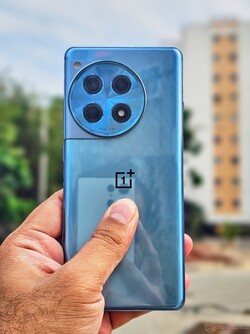
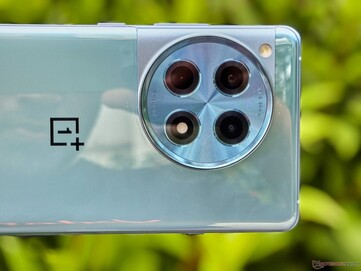
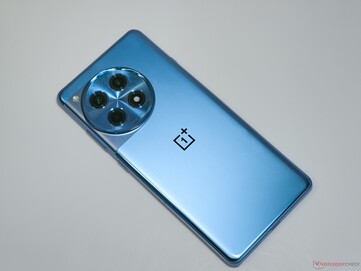




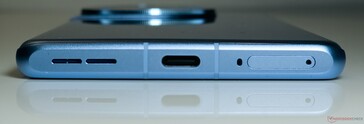









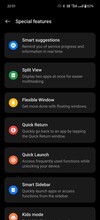




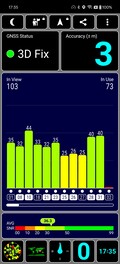



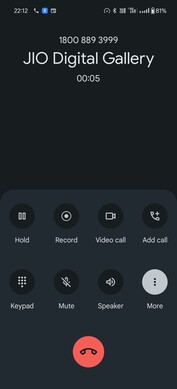
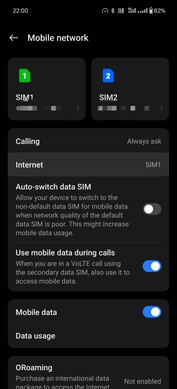
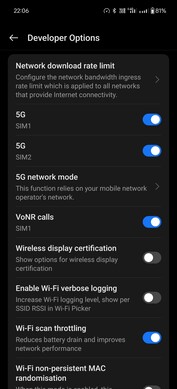


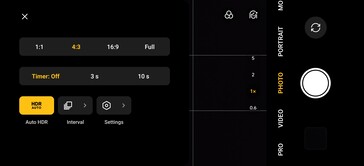
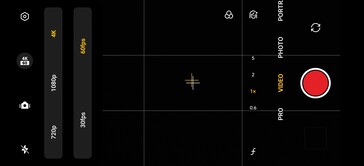
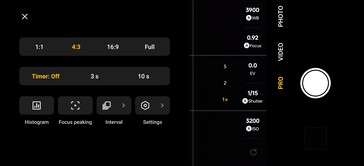
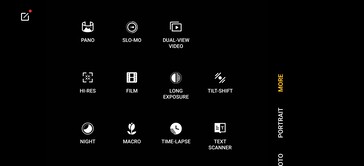



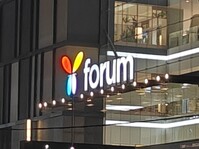

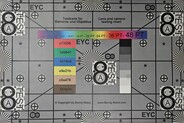



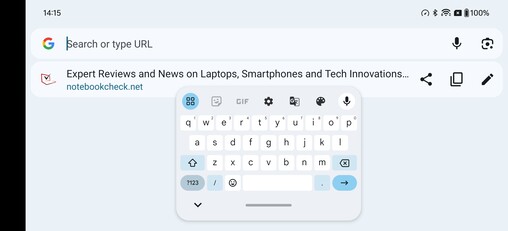

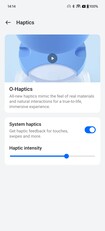


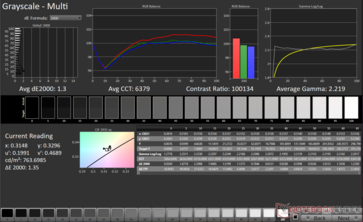


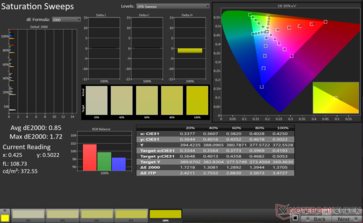
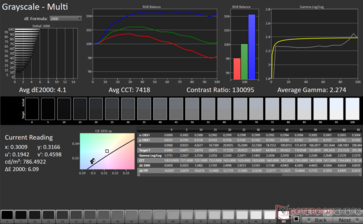


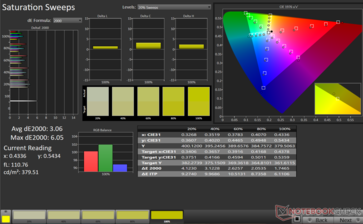
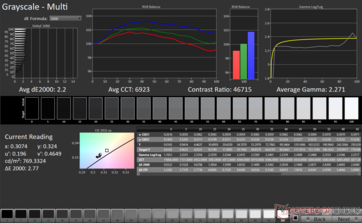


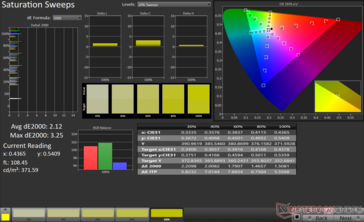
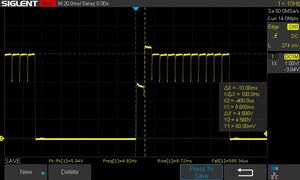
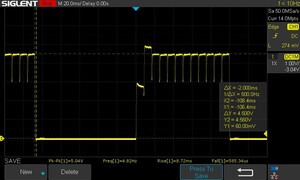

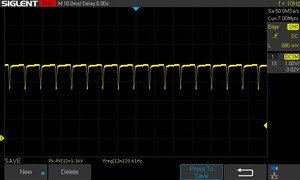

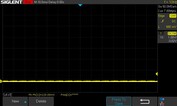
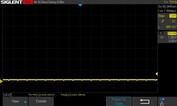
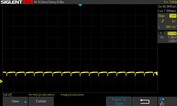


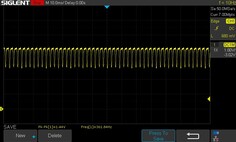









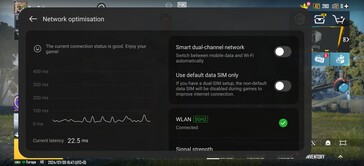

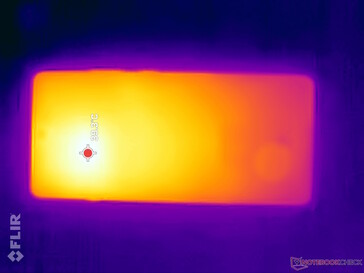
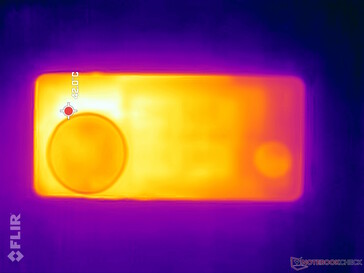
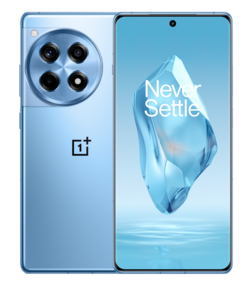
 Total Sustainability Score:
Total Sustainability Score: 